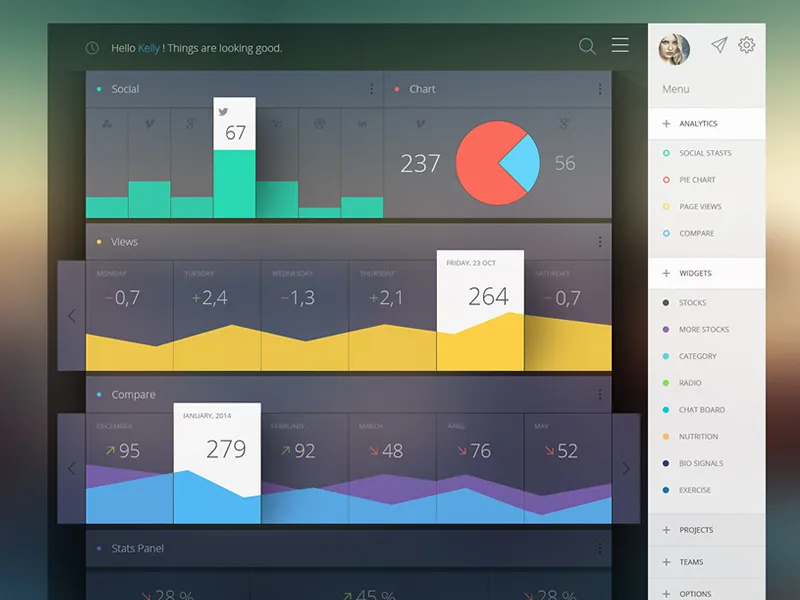Personalization in email marketing goes beyond addressing recipients by their first names. By leveraging behavioral data, you can tailor your email content to match the interests, preferences, and actions of your subscribers. This not only increases engagement but also enhances the likelihood of conversions. In this comprehensive guide, we’ll explore how to effectively use behavioral data to personalize your emails and drive better results.
1. Collect and Segment Behavioral Data
Implement Tracking Mechanisms
To personalize emails based on behavior, you first need to collect relevant data. Key data points to track include:
- Email Engagement: Open rates, click-through rates (CTR), and time spent on emails.
- Website Behavior: Pages visited, products viewed, items added to cart, and purchase history.
- Social Media Interactions: Engagement with your brand’s social media posts and shares.
- Purchase History: Products purchased, order frequency, and average order value.
Use Email Marketing Tools and Analytics
Utilize email marketing platforms and analytics tools to gather and analyze behavioral data effectively. Platforms like Mailchimp, EmaiLead, and HubSpot offer built-in features for tracking and segmenting audience behavior.
Segment Your Audience
Segment your email list based on behavioral data to create targeted campaigns. Common segments include:
- Engagement Level: Active subscribers vs. inactive subscribers.
- Purchase Behavior: Repeat customers vs. first-time buyers.
- Content Interests: Subscribers interested in specific product categories or topics.
- Abandoned Carts: Subscribers who have added items to their cart but haven’t completed the purchase.
2. Understand Customer Journeys and Preferences
Map Customer Journeys
Visualize the typical paths customers take from awareness to purchase and beyond. Understand the touchpoints where personalized emails can make a significant impact.
Analyze Preferences and Interests
Review behavioral data to uncover patterns and preferences. Identify what products or content categories resonate most with different segments of your audience.
3. Craft Personalized Email Content
Personalize Subject Lines
Tailor subject lines to reflect recipients’ interests or recent actions. Use dynamic content insertion to include specific details like product names or recent purchases.
Customize Email Body Content
Create emails that speak directly to recipients’ behaviors and preferences:
- Recommendations: Suggest products similar to those previously purchased or viewed.
- Exclusive Offers: Provide discounts or promotions based on past behaviors, such as abandoned carts.
- Educational Content: Share tips or resources related to their interests or previous engagements.
4. Implement Dynamic Content and Automation
Dynamic Content Blocks
Use dynamic content blocks to automatically adjust email content based on recipient data. This could include showcasing different products or offers depending on past behaviors.
Email Automation Workflows
Set up automated workflows triggered by specific behaviors, such as:
- Welcome Series: Send personalized welcome emails based on sign-up sources or interests.
- Abandoned Cart Emails: Remind subscribers about items left in their cart to encourage conversion.
- Re-engagement Campaigns: Target inactive subscribers with tailored content to regain their interest.
5. Test and Optimize Personalization Strategies
Conduct A/B Testing
Test different personalization strategies to see what resonates best with your audience. Experiment with variations in subject lines, content, and offers to optimize performance.
Monitor and Analyze Results
Track key metrics like open rates, CTR, conversion rates, and unsubscribe rates to gauge the effectiveness of personalized campaigns. Use analytics tools to gain insights into subscriber behavior and adjust strategies accordingly.
6. Ensure Compliance and Privacy
Compliance with Regulations
Adhere to data protection regulations like GDPR or CCPA when collecting and using behavioral data. Obtain explicit consent from subscribers and provide options for managing preferences.
Respect Subscriber Privacy
Maintain transparency about how you collect, use, and store behavioral data. Offer clear opt-out mechanisms and respect subscribers’ preferences regarding personalized content.
7. Examples of Effective Personalization Using Behavioral Data
Example 1: E-Commerce Retailer
Behavioral Data Used: Purchase History
Personalization Strategy: Send product recommendations based on past purchases. For example, if a customer frequently buys running shoes, recommend new arrivals or related accessories.
Example 2: SaaS Company
Behavioral Data Used: Website Behavior
Personalization Strategy: Send targeted emails based on the features or pages users have explored on the website. If a user has shown interest in project management features, send emails highlighting case studies or user testimonials related to project management tools.
Example 3: Travel Agency
Behavioral Data Used: Abandoned Carts
Personalization Strategy: Send reminder emails with personalized offers for flights or accommodations that were left in the cart. Include incentives like discounts or bonus points to encourage booking.
8. Conclusion
Harnessing behavioral data to personalize your emails allows you to deliver relevant content that resonates with subscribers at every stage of their journey. By collecting, analyzing, and leveraging data effectively, you can create personalized experiences that drive engagement, conversions, and long-term customer loyalty. Continuously test and optimize your personalization strategies to ensure they align with subscriber preferences and deliver measurable results for your email marketing efforts. With thoughtful and strategic use of behavioral data, you can elevate your email marketing campaigns and achieve greater success in reaching and engaging your audience.
